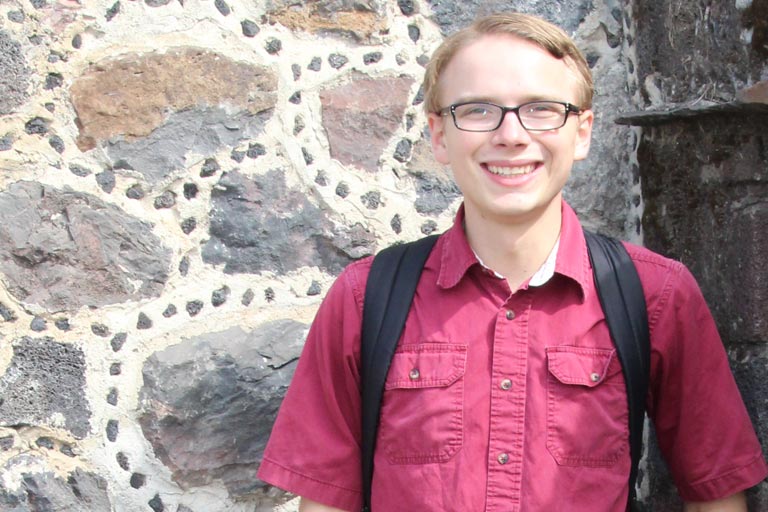Jonathan West: Student Report from 2018 Alternative Winter Break to Mexico
Hello! My name is Jonathan West. I am a junior civil engineering student here at UT. I am writing this blog to chronicle the events that occurred on the Tickle College of Engineering Alternative Winter Break to Mexico. In addition, I will try to point out any interesting cultural points I noticed throughout the trip.
On Monday, December 14, our trip to Mexico began in the Atlanta International Airport. For me, this seemingly mundane event was actually exciting since I had never been on an airplane before. I met up with TCE International Coordinator, Judith Mallory, and several other students at the airport before taking off in my first flight. Flying was very enjoyable for me. I thought the best way to describe it was like a roller coaster for the first three minutes before turning into the feeling of a smooth boat ride until several hours later at landing. The experience of riding in an airplane for me was fascinating and just got me more excited for the journey-to-come in Mexico.
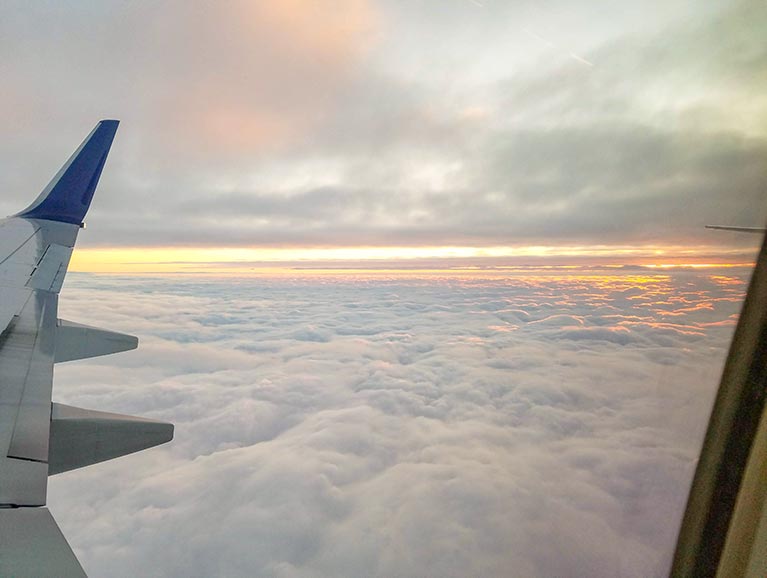
We landed in Mexico City roughly three hours later, where we would spend the remainder of our first day in Mexico. For a short time, we waited in the airport to rendezvous with the rest of the trip members that came in on later flights. Immediately after leaving the airport, we took several Ubers to the hostel where we would be staying for the night. This ride thoroughly convinced my brain that we were in a new county.
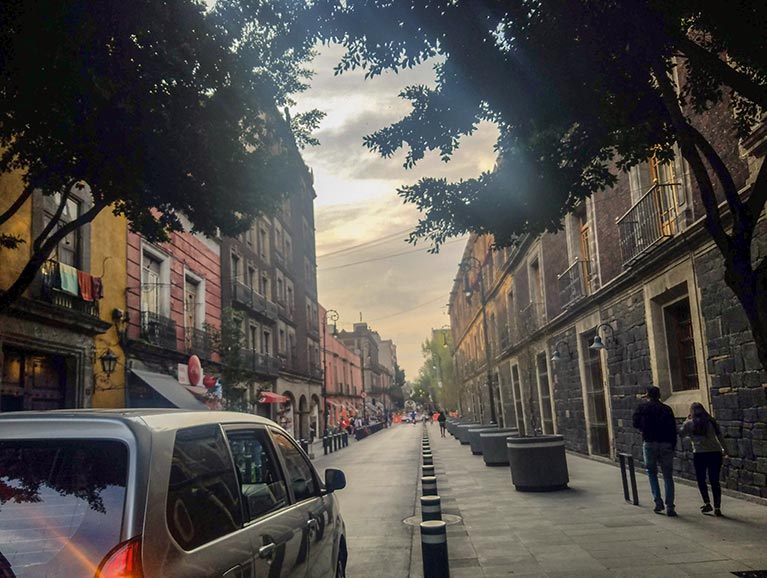
The first and most shocking thing was the driving and roads. I know some people who get uncomfortable with following distance in the United States, but we appear to have a distance equal to half the circumference of the Earth between cars compared to the drivers in Mexico City. Traffic lines, when they were even painted at all, were only loosely recognized. It was an exhilarating experience!
Another difference I noticed immediately between Mexico City and every American city I have been to is how comfortable pedestrians are occupying space in the road. Almost every street had stalls and food vendors sticking out into the road. Vehicular traffic would come to a standstill as pedestrians walked right in front of moving vehicles. Street performers would even walk in front of a lighted intersection and perform for the short time before the light switched to green.
The final difference I noted in this car ride was the fascinating architecture. It seemed to be a combination of Spanish Colonial-style architecture that you would see on a cathedral; one always seemed to be visible from any street in Mexico City. This was not too surprising, since it is similar to the architecture in some older districts of Florida. The other architecture style was one of brightly colored, open, and more flat buildings that I strongly associate with Latin America. I found these buildings to be more interesting since I was less familiar with them. Our hostel was of this style, and one of the most noticeable parts of the building, which we encountered several other times during our trip, was the space in the center of the building that opened directly to the sky. This courtyard feature made the building feel more like a network of rooms than a single unit.
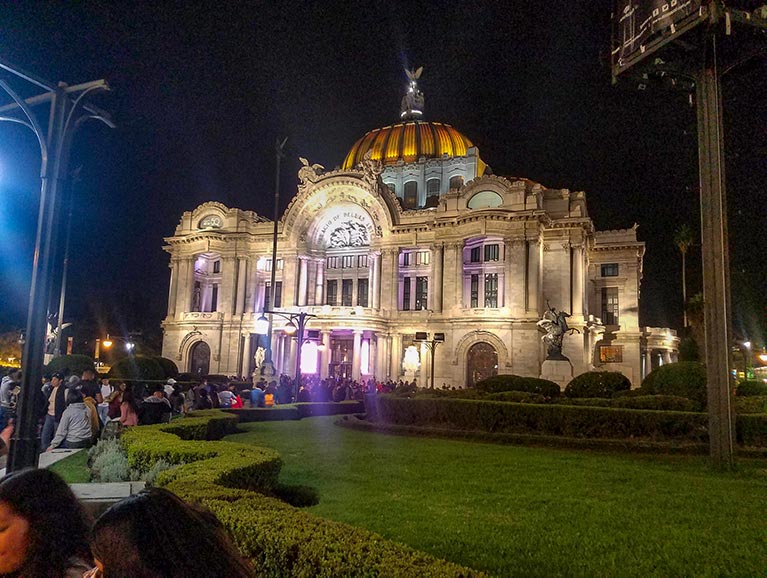
A walk down a busy main street in Mexico City showed that not everything was foreign in this foreign nation. It was dark, and we were walking down a busy commercial street that reminded me of Times Square, except with about two-thirds the brightness and no vehicular traffic. However, pedestrian traffic was just as crowded.
I saw many familiar things on that walk that challenged the notion that the Mexican culture was entirely unfamiliar. First, the clothing was extremely American. Polos and tee shirts predominated the majority’s share of the shirts seen. In addition, there were many people dressed up as Disney and Marvel characters, not unlike what you would see at an amusement park such as Disneyworld. The stores on either side of the street were largely American brands and those that were not did not look very out of place. I doubt that bartering would have been appreciated at these commercial establishments. Even on the shops on the street mentioned earlier, where bartering seemed to be commonplace, the merchandise was no different from Christmas toys I see people buy their children here in the US—remember that this trip took place right before Christmas. I even saw a Tesla automobile on one of the streets, which seemed slightly out of place among the more traditional Latin American architecture.
All these observations made me realize that Mexico is split into many distinct cultural groups, just as is the United States. The residents of Mexico City did not seem to be of any traditional social group; instead, this was a Mexico featuring an urban middle class. This makes sense in hindsight, but it really is not something I ever would have thought about without experiencing it.
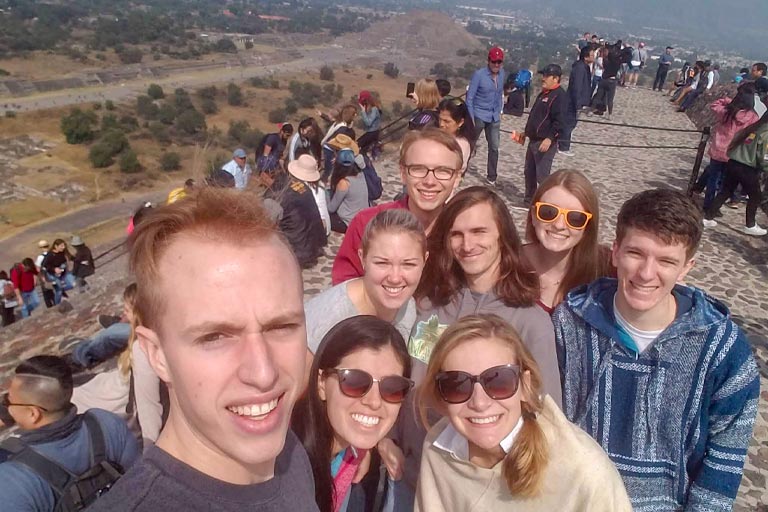
The next day was a busy one that started with a short van ride to the famous Sun and Moon Pyramids of Teotihuacan and ended with a night in the city of Puebla. The pyramids were amazing, both for their historical significance and just for the sheer human achievement that they represent. We were able to climb to the very top of the Sun pyramid, which was exhausting, but worth it for the spectacular view from the top. At the bottom, there were several local vendors, all selling suspiciously similar products.
One exciting thing happened there—when I was approached by a Mexican student who looked to be in her early years of high school or later years of middle school. She had English homework where she had to talk to native English speakers. She asked basic questions, such as, “What is your name?” and “Where do you live?” Even though the conversation was so basic, it was oddly satisfying, because it felt like we were personally breaking a language barrier.
After the trip to the pyramids, we rode a public bus to Puebla. That night we dined on the exquisite and authentic churro, which was worth the entire trip alone. We spent the next morning in Puebla where we did some sightseeing. Puebla was a nice contrast with Mexico City because, while it was still definably a city, it was much smaller and had less of the familiar US culture that I noticed in Mexico City. We saw more large cathedrals, an interesting Mexican art museum, and several markets where I was able to buy some souvenirs.
At the markets, I was able to try some crickets a street vendor was selling. I acknowledge that this was a risky venture, but I wanted to try something completely different. The food got me some disapproving faces from other members of our group, which I found amusing. The crickets did not actually taste bad, but I wouldn’t say they tasted good, either. After touring Puebla, we headed out to the rural agricultural school where our service project would take place.
We arrived at the agricultural school after spending one more night at the in-between location of Cuetzalan. Work on our project began immediately after settling in. Our project was to build an ecologically friendly restroom facility from bamboo and palm fronds. The first day was spent gathering materials: cutting down bamboo, cutting the palm fronds, and transferring these materials to the work site. The second day featured the majority of the construction including all of the structural components of the restroom. Both the structural members and walls were made of bamboo, cut to different specifications. Nails and bolts were utilized to connect the members and wall siding. The third and final day of the project consisted of finishing the last part of the bamboo walls, placing, and lashing the palm fronds to make a roof for the structure. Overall, I was very proud of the work we put in and I came away with a new appreciation for working with these unusual building materials.
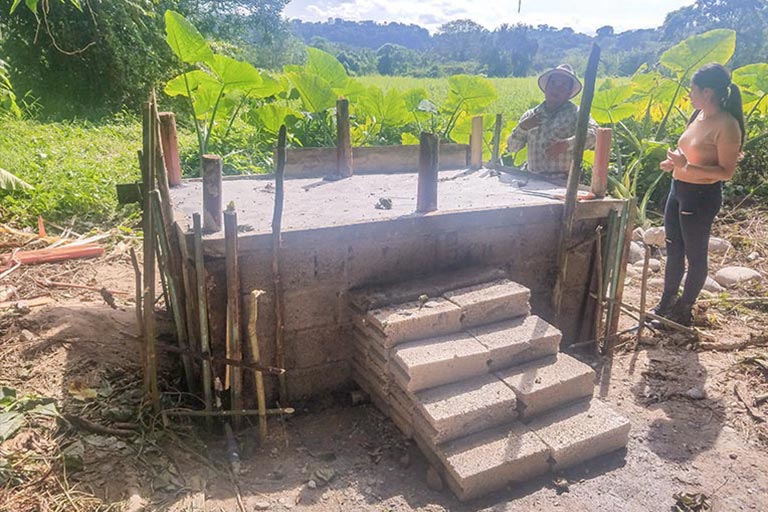
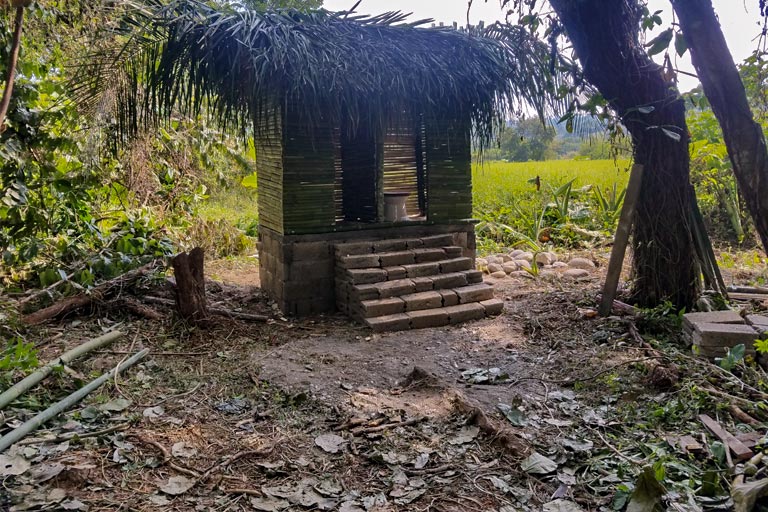
At this point in the trip, we had two days left; unfortunately, I have little to report on these days because I spent the time recovering from a food-borne illness. I know the most obvious assumption is the crickets, but I think it was from an unhealthy amount of raw lettuce consumption. Regardless, I was well taken care of by Ms. Mallory and the rest of the group, for which I am very thankful. I would not let my illness deter a would-be traveler, because one would be in capable hands if an illness developed, and the rest of the trip was great enough to be worth the risk.
Overall, I am very happy that I went on this trip. I believe that I received a good sampling of a distinctly foreign culture in both its modernized urban form and its more traditional rural one. I am also pleased with the accomplishment of our service project and the effort we expended to bring it to completion.
